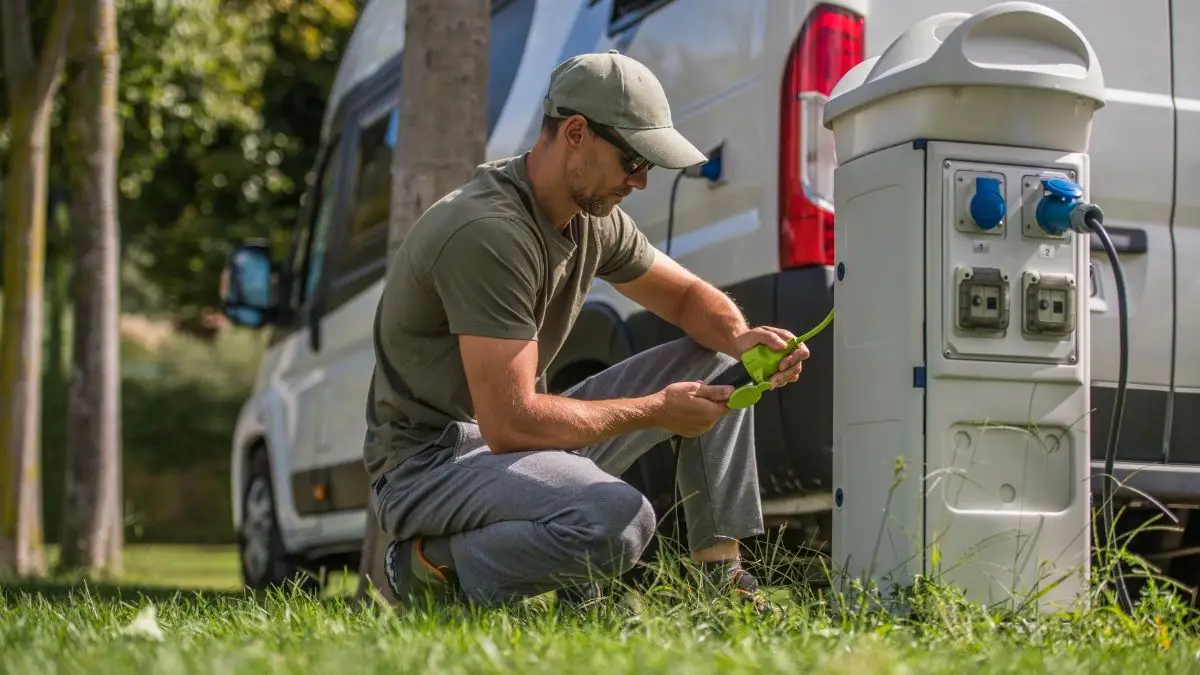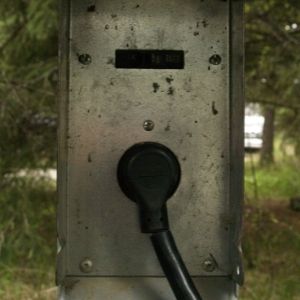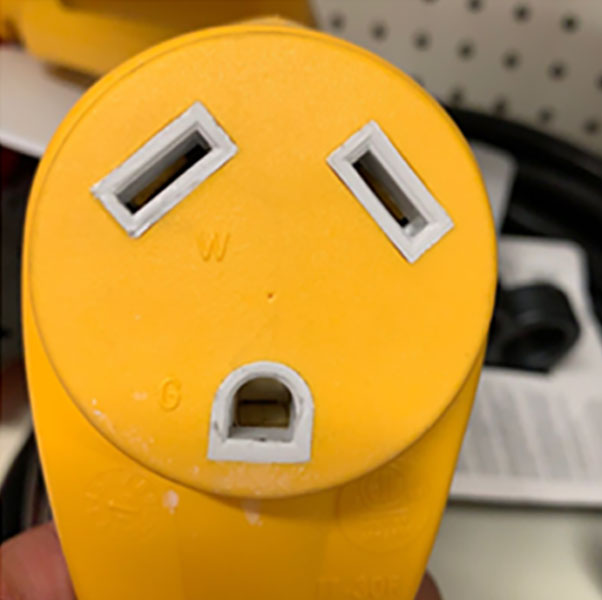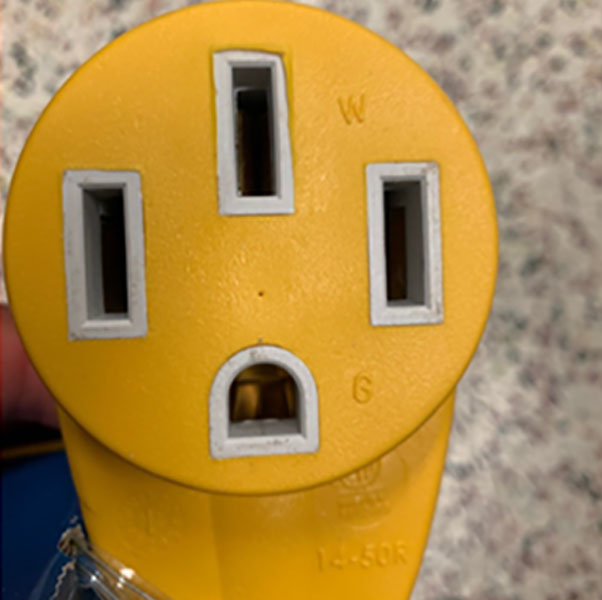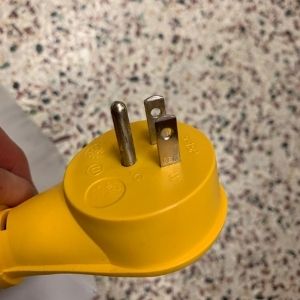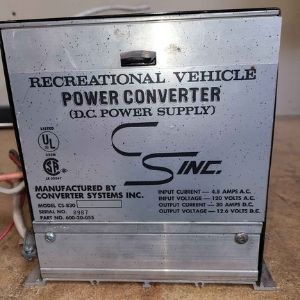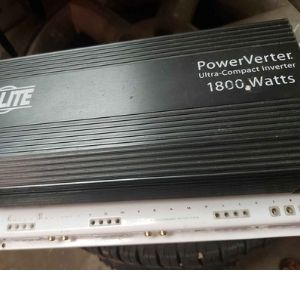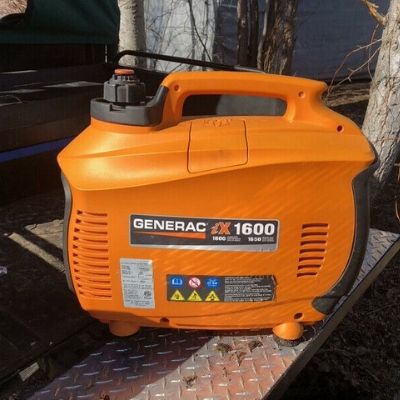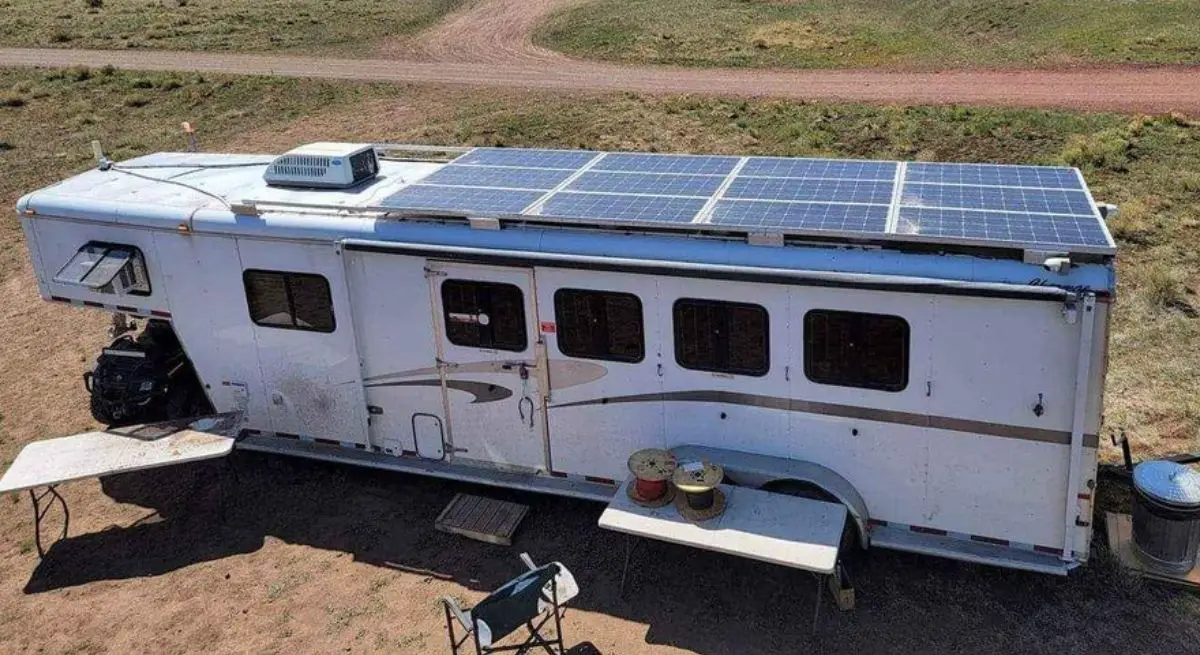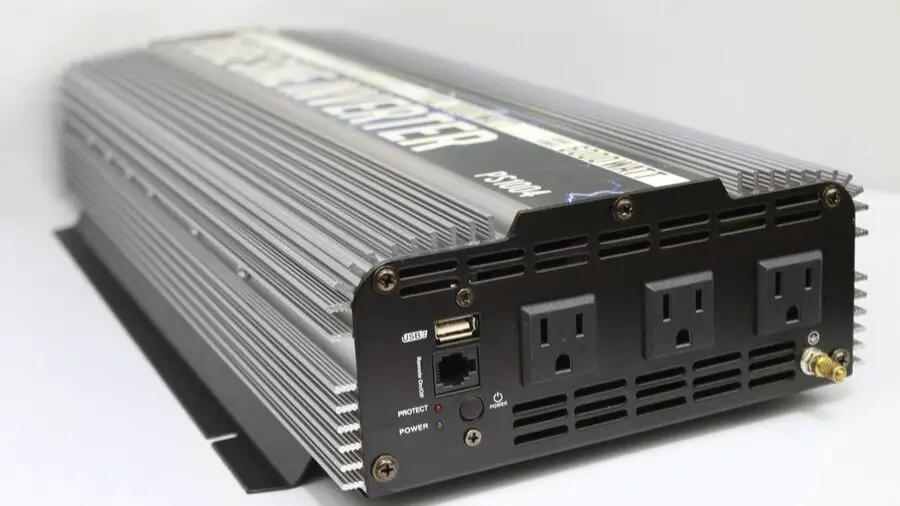A Beginners Guide
Before we go into the nitty gritty stuff, I wanted to highlight electrical safety first because any electrical hazard (open wires, short circuits, etc.) can cause burns, shock and electrocution. There are a lot of safety tips online, but some of the most general reminders I’d like to share are:
- Always make sure that the power source is off/unplugged, before working on any part of the electrical system
- Never assume that a wire is safe to touch, since some electricals can still carry a charge
- Never overload a circuit (multiple extension cords, etc.)
- Keep the area near any electricals dry, because water, wet hands, or even high humidity can increase electrocution risk.
An RVs electrical system can seem overly complex. However, the electrical system is easy to understand once you know a few basic things. RVs (trailers and motorhomes) have 2 separate electrical systems. A 12-voltDC coach/trailer system and a 120-voltAC coach/trailer system. Motorhomes have an additional electrical system, which is the 12-volt DC of the automotive system, that feeds into the coach’s 12-volt DC batteries and is separated by way of an isolator. The isolator only allows 12-volt power generated by the alternate or to flow one way, thus protects the automotive battery from being drained by power use in the coach.
The AC system only has power to it when plugged into shore power unless your RV has an inverter. The DC side, which is connected to your batteries has power all the time if the master cut off switch is on. Some items in your RV Run on DC only and some only on AC, while some run on both AC and DC depending on what power is available. Here’s a list of items in an RV and what type of power it uses.
| Item | DC power | AC power |
|---|---|---|
| Lights | X | |
| USB plug | X | |
| WIFI Booster | X | |
| Cell Booster | X | |
| Television | X | |
| Satellite System | X | |
| Furnace Propane (fan) | X | |
| Tri-fuel fridge | X | X |
| Hot water system | X | X |
| Propane Stove | X | |
| Induction Stove | X | |
| Microwave | X | |
| Electric Awing | X | |
| Washing Machines | X | |
| Dryers | X | |
| Air Conditioner | X |
All RV electrical systems will also have a breaker panel for DC and AC, a converter to convert AC power to DC power to charge the batteries, one (or more) 12V batteries. If the RV has solar panels, there is an additional regulator that is connected to the RV batteries.
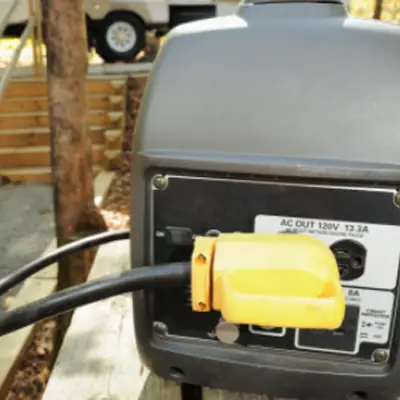
An RV’s AC (Alternating Current) System
The AC electrical system in an RV is typically powered by an external source. All RV’s that have power will at a minimum have a 30-amp plug, while larger motorhomes and trailers will have a 50-amp plug (Class A motorhome, Super C motorhome, 5th wheels and larger travel trailers). While one can plug their RV into a homes 120-volt power, with an adaptor or dog bone, there will not be sufficient power to run all your appliances that requires your full 30- or 50-amp power.
pedestal breakers are usually designed with a +/- 20% tolerance. So, if a regular 30-amp outlet supplies 3,600 watts (30amps x 120v), the pedestal breaker could still trip between 2,880 watts and 4,320 watts (these values are the +/- 20% tolerance I mentioned earlier).
Once you plug in your RV to connect to shore power (AC), the flow of electricity goes as so:
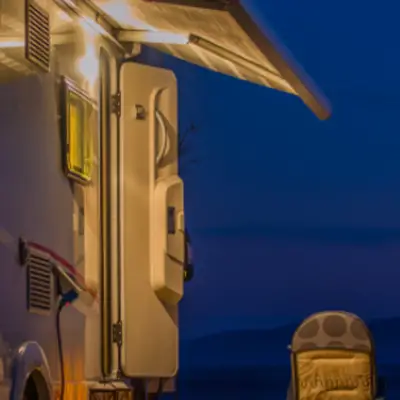
Pedestal >(Pedestal Breaker)>(Surge Protector)> RV Breaker Panel >AC appliances (microwave, Air conditioner, electrical plugs)
This flow would be similar if you plug-in your RV to a generator. Large RVs may come with a pre-installed propane-operated generator, but if you do want to purchase one aftermarket, we’ll discuss this later on in the article HERE.
An RV’s DC (Direct Current) System
DC power is the primary power that is used in an RV. The DC power supply in the RV is powered by Battery banks or battery. The voltage is 12 volts. Most RVs today are still using lead acid batteries to supply power as it’s the cheapest. The next step up is AGM batteries an finally Lithium batteries, which actually have been dropping rapidly in price will probably overtake lead acid batteries in RV use. The Batteries hook up to the Fuse box, where DC power is split up to the different appliances and lights in your Rig. The fuses protect the entire system from possible shorts and damage to your DC power system.
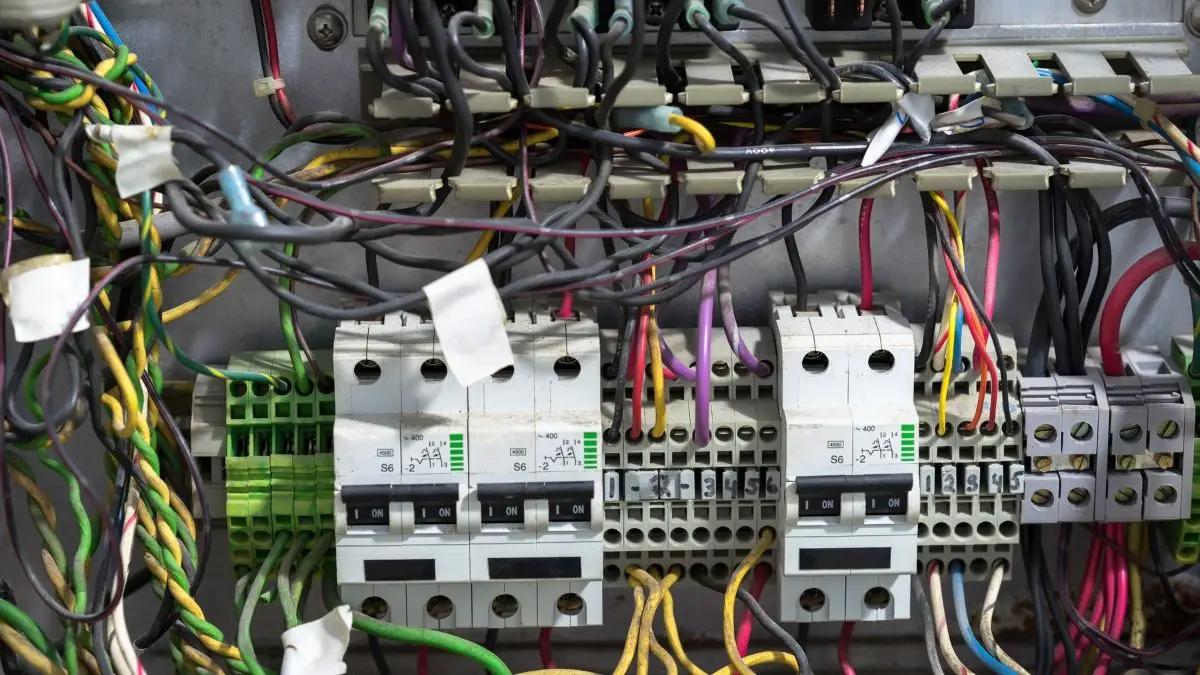
Pedestal >(Pedestal Breaker)>(Surge Protector)> RV Breaker Panel > RV Converter > 12V battery bank>12V fuse box > (lights, USB outlets, WIFI, satellite tv, appliances that need 12V to ignite)
Many New RV’s today come with Solar Panels, they are DC power and are setup with the solar panels generate energy,which feed into a voltage regulator and then into the RV batteries for storage.
Is An RV Battery AC or DC?
Although RV’s use AC power and DC power based on what is available. External power is always Alternating Power or AC. While RV batteries are Always Direct Current or DC power. The standard power is 12-volts in an RV. This is achieved by using 12-volt DC marine batteries set up in parallel or at least 6-volt batteries set up in a series and possibility parrel.

The most common type of RV batteries is lead acid and gel, although lithium-iron batteries are increasingly being used due to the decrease in prices in recent years. The DC power from an RV battery runs lights, USB plugs, and Fridges. If you are interested in knowing more about the different batteries for RV’s check out this article that goes into detail on each type.
Basic RV Electrical Terms
I’ll run through a few basic terms and acronyms we’ll be using throughout the article which will be helpful, especially if you’re new to this, or would just like to recall some of these terms you probably went through in school, but never really took it seriously, until now.
- AC = Alternating Current; current changes directions periodically (same as what you’ll use at home)
- DC = Direct Current; electricity only flows in one direction (same as how you power your car)
- Amps = measures the speed of the electric current (think of it like the water flow)
- Voltage = measures the electromagnetic force to move one ampere (think of it like water pressure)
- Watts = Volts x Amps (power released per second)
- Parallel wiring = Doubles the Amperage, but voltage stays the same
- Series wiring = Double the Voltage, leaving amperage the same
- UPS = Uninterrupted Power Supply
- Watt hours (Wh) = daily watt hour consumption
= watts of the appliance x hours used per day = watts of the appliance x minutes used per day ÷ 60 minutes*Some appliances are only used for a fraction of an hour or minute per day. So if you need to compute for the Watts of a 1100W electric kettle for 10 minutes per day.
I’ll be mentioning these terms a lot in the article, so if you get confused, don’t hesitate to go back to this section.
What Is The Standard RV Electrical Hook Up?
The available RV electrical hook-up service, or pedestals, in an RV park or a developed campground would be:
- 15 or 20 amp – this is the standard looking household plug
- 30 amp
- 50 amp
The most common pedestal plug-ins in RV parks would be a 30-amp service. While some campgrounds only offer 15 or 20 amp. An adaptor is needed to convert the your RV’s plug to the services provided.Larger RV’s usually require more electricity, as it has more appliances in it that need to be powered. If by chance that there isn’t a 50amp service available on the pedestal, you can still plug your RV into a 30amp outlet, but you’ll need to use less of your electrical equipment onboard. If possible, use shorter adapters and extension cords, to avoid voltage drops.
30 amp plug
Can I Plug My RV Into A 120v Outlet Or Into A House?
Plugging an RV into a house 120 outlet will not do any harm to your Rig. A houses 120 volts at 15 or 20 amps will just not provide enough amps to power all the appliances in the motorhome or Trailer. People who plug their RVs into their house power with an adaptor, that goes from 30 or 50 amp to 120 plug. Typically, experienced RVers do this 4 to 24 hrs before they head out on a camping trip, by cooling their Fridge with AC power prior to camping, there is less chance of food spoilage.
How Does An RV Converter Work?
An RV converter works by turning Alternating Current (AC)to Direct Current (DC) by way of a transformer. No different than your cell phone charger that plugs into a wall outlet with 120 volts to DC power for your phone. The AC power that is used in RV’s is 50-amp, 30-amp and 20-amp with 120 volts. While the DC power in RV’s are 12-volts. The typical converter produces 30 to 40 amps DC amps per hr.
How Much Power Do I Need For My RV?
To determine how much power, you need for your RV, you’ll need to make a list of every appliance that consumes power in your RV and how many watts of power they consume. As you’re listing down all the items that require electricity, there should be a label on the unit (usually in the back, or underneath) that will show the rated voltage &maximum amperes it needs to run. Some labels will also include the watts (so you don’t need to compute for it). Following the formula to compute the wattage will help get exactly how much electricity you need. This will help you:
- Figure out which items could be tripping your circuit breaker or fuse
- Gauge what generator to buy (if needed)
- Determine how many solar panels (as applicable)
- Find out how much batteries you need, especially if you plan to by boondocking for a while
If ever you do just want a guestimate on how much power you need for your RV, below are examples of the approximate wattage of certain RV appliances.
- RV 30 AMP service = 3,600 watts
- RV 50 AMP service = 12,000 watts
| Appliance | Start-up Wattage | Running Wattage | |
|---|---|---|---|
| Basics | RV Rooftop Air Conditioner (13,500 BTU) | 2800-3000W | 1500-2000W |
| RV Rooftop Air Conditioner (15,000 BTU) | 3300-3500W | 1300-1800W | |
| Furnace Fan Motor (1/3HP) | – | 1200W | |
| Electric Water Heater (6 gallon) | – | 1200W | |
| Power Converter (780W) | – | 780W | |
| Water pressure pump | – | 50W | |
| One (1) LED Interior Lightbulb | – | 8.5W | |
| One (1) Incandescent Lightbulb | – | 60W | |
| Kitchen | RV Refrigerator (small) | 600W | 180W |
| Slow Cooker | – | 1000W | |
| Microwave | – | 1000W | |
| Coffee Maker | – | 600W | |
| Dishwasher | – | 800W | |
| Electric Kettle (1100W) | – | 1200W | |
| Blender | – | 1200W | |
| Induction Cooktop | – | 1800W | |
| Toilet | Washing Machine | – | 480W |
| Bathroom Vent Fan | – | 12-35W | |
| Other Electronics/Appliances | Small Flat TV | – | 120-200W |
| Satellite Receiver | – | 250W | |
| Laptop | – | 50W | |
| Mobile phone (charging) | – | 3.68W | |
| Radio | – | 50-200W | |
| Hair Dryer (1600W) | 1900W | 1800W | |
| Printer | – | 50-80W | |
| Portable Heater | – | 750-1500W | |
| Portable Fan | 120W | 40W |
These are averages, and the list could go on, but I really would recommend doing the work, so that you get to know your RV’s electrical load properly. This will also allow you some leeway if you want to upgrade your electrical system, your RV interior light bulbs or appliances.
What Types Of RV Batteries Are Available?
Deep cycle batteries are used more often for motorhomes/RVs, solar power systems, boats, etc. but they’re often marketed with terms that are often interchanged. So, when it comes to the world of deep cycle batteries, the available types are:
- Flooded
- Gel
- AGM (Absorbed Glass Mat)
- Lithium-Ion
I have a separate article explaining this in detail here, since each of these deep cycle batteries have their pros and their cons. Choosing the right batteries are critical if you want to do more boondocking and you want to use solar panels to provide power
What Is An Inverter For My RV?
An inverter converts the direct current from your 12v batter into a 120v alternating current. When you’re boondocking, your batteries will automatically power all items that run on DC power. Adding an inverter will allow you to use your electrical outlets and all other 120v appliances (provided you’ll have enough power stored in your batteries). Small inverters, like a 3000 unit, can even handle the easy start of small factory AC units. You can read more about it here.
What Size Of Portable Generator Do I Need For My RV?
Most small to medium sized RV’s use a 30-amp power, which is 3600 watts. While large RV’s use 50-amp power or 12,000 watts. A camper that has a 30-amp requirement would require a 3600-watt generator and a 50-amp RV would require multiple generators to produce 12,000 watts of power. The size of generator one needs is primarily determined by the power consumption that is expected. While a 2000 watt generator could work to run minimal appliances, it does not provide the full use of all appliances. If you are looking to buy a generator, you can check out this article I wrote on the information one needs to consider when looking for a portable generator.
Conclusion
We’ve covered some general safety tips, the overview of your RV Electrical Systems, and some of the frequently asked questions when it comes to this topic. Electricity is no joke, and can cause harm if not managed properly, so understanding it brings nothing but a good working knowledge of how to maintain and operate your RV properly and keep you and your loved ones safe.

